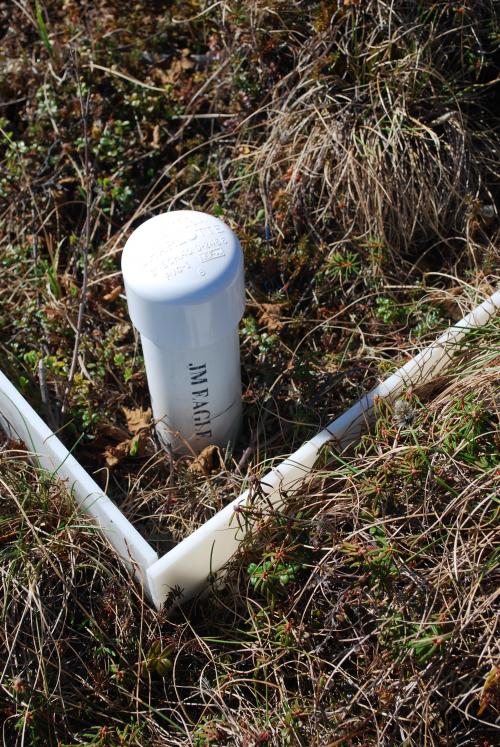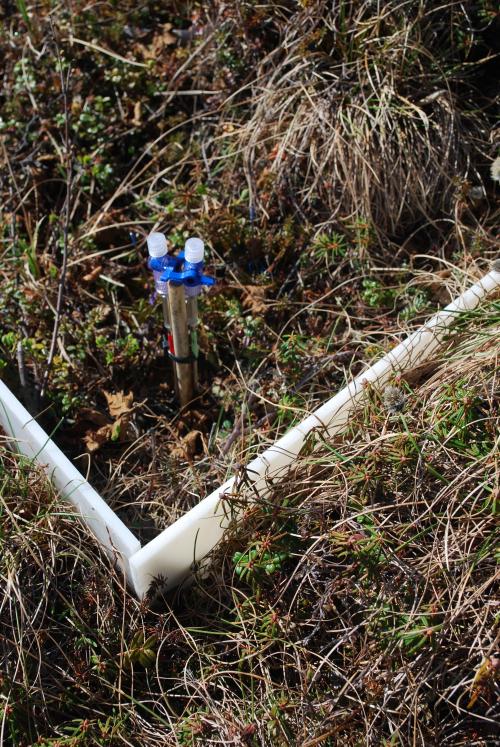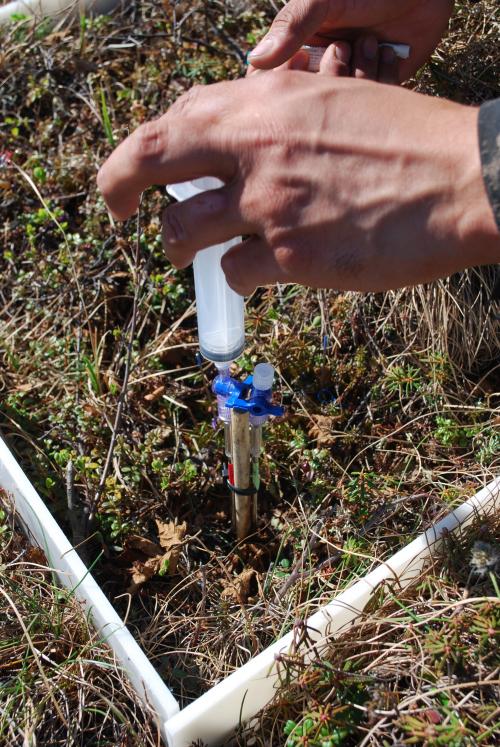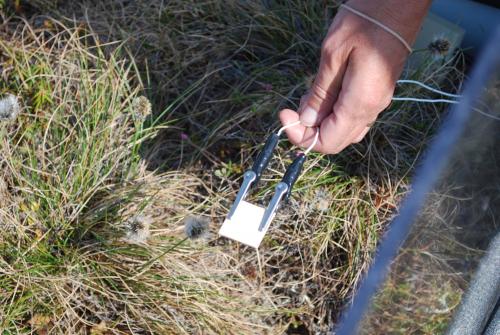If you remember at the beginning of the expedition I said that I would be talking mostly about the main experiments going on at our site. This included the warming experiments and the drying experiments, which we have covered in previous journals. I also mentioned that there were other measurements being taken that I may or may not have time to get to. Well, I have time to get to some of them today.


I assisted Andres and Elizabeth today with the methane samples. Methane (CH4) is another greenhouse gas like carbon dioxide (CO2). They both contain carbon and they both are produced naturally. Methane makes up most of what we call natural gas. It comes from the ground as a fossil fuel and escapes into the atmosphere. It is a much stronger greenhouse gas than CO2, and methane can damage the ozone layer. Our site does not produce much methane. But we need to keep track of the amounts that may be released into the air. The problem of measuring how much is really in the ground is that the methane coming from deep layers does not reach the surface. When the methane comes into contact with certain bacteria in the soil it is broken down and changed into CO2. So in order to measure how much methane is in the ground we much put tubes into the ground and sample the gases coming up through the tubes. One sample can be very small, but when you consider how large of an area the tundra around the world takes up, that can add up to alot of methane!

I also helped placing the moisture sensors in the new drying plots. We have electronic moisture sensors in all of the plots now but they sample the soil at about 40 cm deep. The sensors we put in today measures the moisture at the surface of the ground and are much simpler to use. These sensors are made up of two wires hooked to a battery and one piece of thin wood. The wood conducts electricity, which changes with the amount of moisture in the wood. We can measure that current of electricity. As the wood gets wet of dry, we can see the current change.

I also placed some decomposition bags in Site C, marked Talbert Experiment. These bags are identical to the bags that we will be installing when I get back to school. By September we will be able to sample these bags and compare the amount of decomposition in both Alaska and Southern California. It should be fun! And tomorrow we are going on a tour of the permafrost tunnel that was dug way back in the 70's by the Army Corps of Engineers. This is a huge tunnel with some interesting things to see. I'll let you know how it goes.


Comments